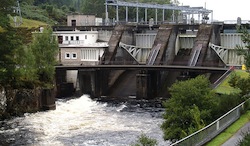According to a new report, The Way Forward for Renewable Energy in Central America, authored by the Worldwatch Institute, Central America is far from harvesting its enormous renewable energy resources to their fullest potential. The region is a worldwide leader in hydropower and geothermal and is developing wind energy, yet has room to expand.
 “Central America is at a crossroads,” said Alexander Ochs, Director of Climate and Energy at Worldwatch and co-author of the study. “As the economies of Belize, Costa Rica, El Salvador, Guatemala, Honduras, Nicaragua, and Panama expand, regional use of fossil fuels is growing quickly while the use of traditional fuel wood, primarily for cooking, remains unsustainably high.”
“Central America is at a crossroads,” said Alexander Ochs, Director of Climate and Energy at Worldwatch and co-author of the study. “As the economies of Belize, Costa Rica, El Salvador, Guatemala, Honduras, Nicaragua, and Panama expand, regional use of fossil fuels is growing quickly while the use of traditional fuel wood, primarily for cooking, remains unsustainably high.”
Ochs continued, “These developments come with significant health, societal and economic costs, including rising greenhouse gas emissions and worsening air and water pollution. Central America has the potential to meet 100 percent of its electricity needs with sustainable renewable energy, but the proper policies and measures need to be put in place now.”
The report assesses the status of renewable energy technologies in Central America and analyzes the conditions for their advancement in the future. It identifies important knowledge and information gaps, evaluates key finance and policy barriers, and makes suggestions for how to overcome both. The study serves as a “roadmap of a roadmap,” scoping the improvements needed to facilitate the transition to a sustainable energy system and establishing the necessary methodology and groundwork for comprehensive regional and national energy strategies.
The reports focuses on four “high-impact” areas for transitioning Central America’s energy systems:
- Expanding a
 ccess to sustainable energy in underserved communities through distributed renewable energy.
ccess to sustainable energy in underserved communities through distributed renewable energy. - Slowing the region’s rapidly rising fossil fuel use for centralized power generation.
- Addressing more aggressively the unsustainable use of fuel wood for cooking.
- Tackling the region’s rapidly rising energy use for transportation, a sector that in some countries already contributes the highest share of carbon dioxide emissions.
“Central American countries have issued ambitious policy statements that express political will for the further advancement of renewables, and some of them have made significant progress. However, there is much room for improvement to reach the region´s full potential,” added Ana María Majano. INCAE Business School’s Latin American Center for Competitiveness and Sustainable Development (CLACDS) and a co-author of the study. “In many cases, countries lack binding long-term goals and a coherent development strategy to reach them. Concrete policy instruments are often missing or not working properly, and administrative ineffectiveness sometimes impedes full implementation.”
The report is the culmination of the first phase of Worldwatch’s Central America Sustainable Energy Initiative, launched in partnership with CLACDS.

